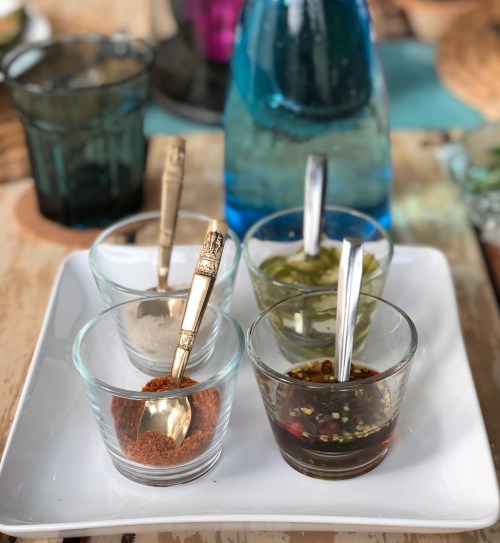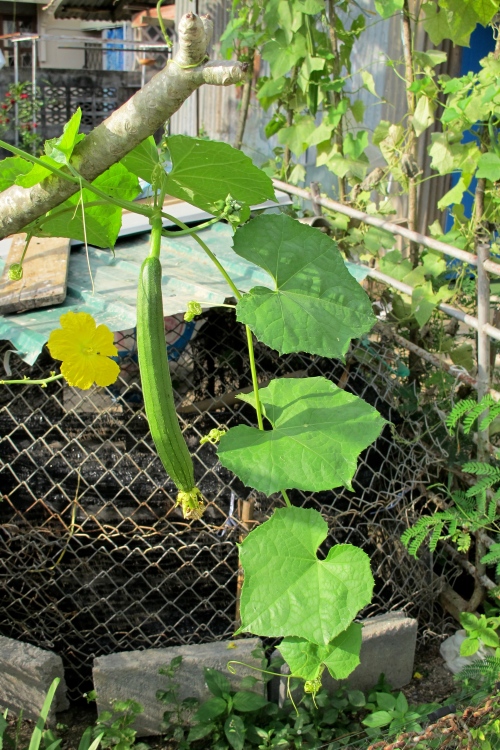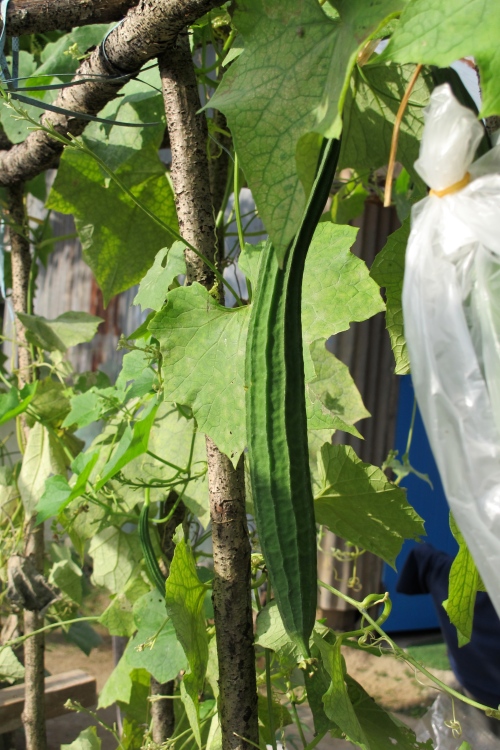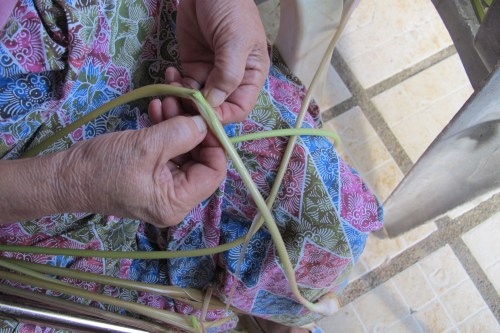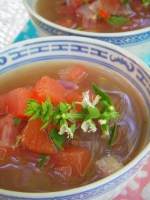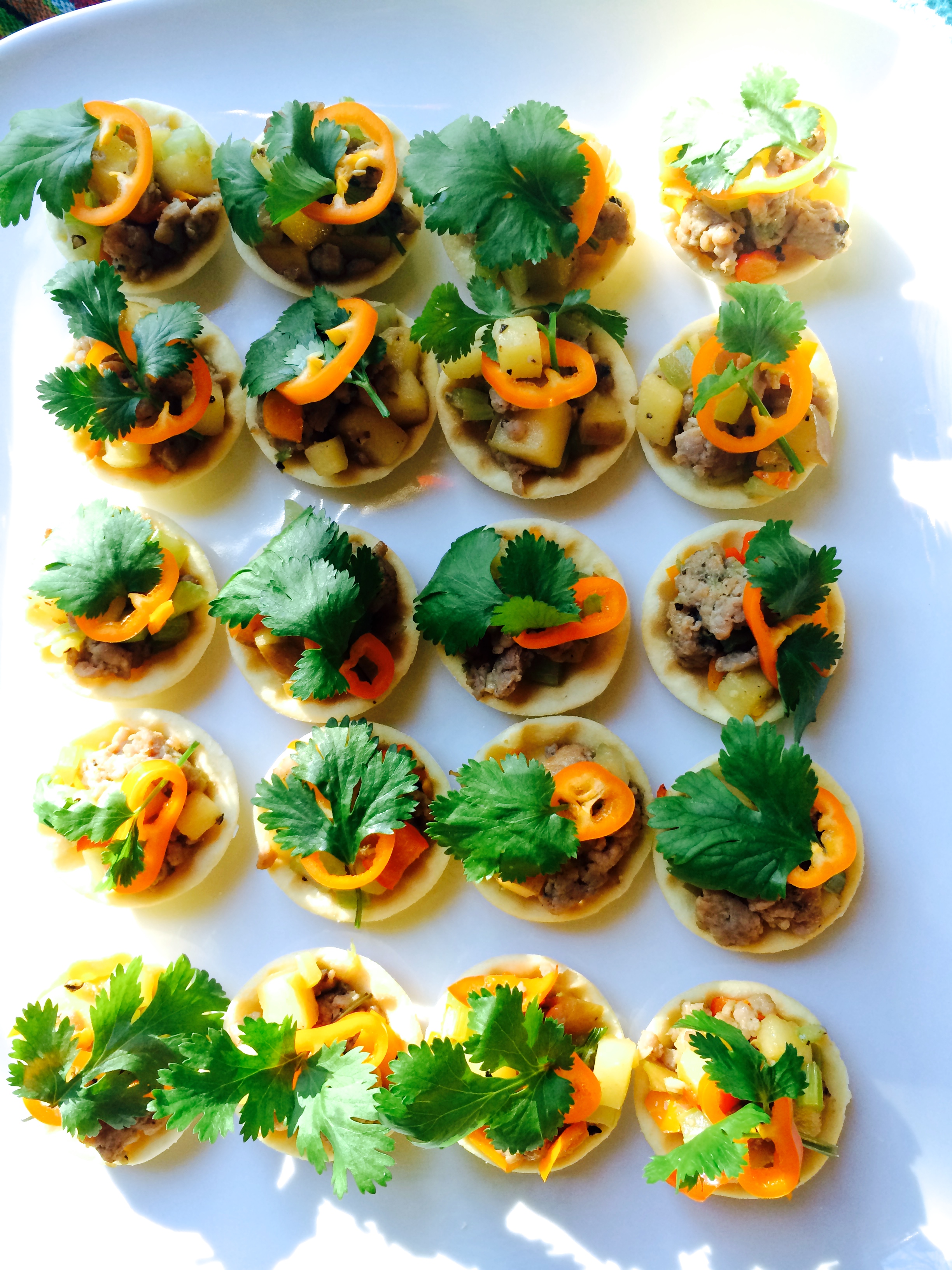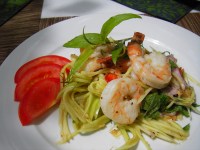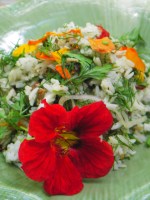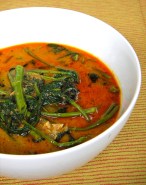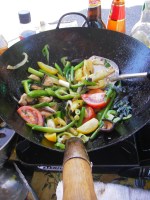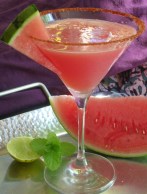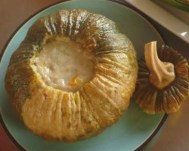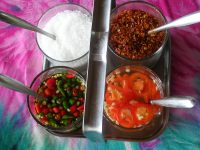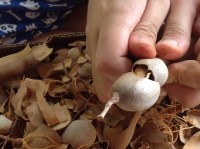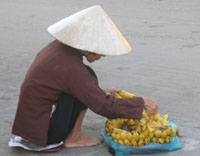From Jade, to Mantis, to Celadon Green

Pandan Sweet Sticky Rice – ข้าวเหนียวแก้วใบเตย – Kao Neow Kaew Bai Toey
Kao Neow Kaew Bai Toey – Sweet sticky rice, coconut milk and sugar with pandan green color and flavor
Many Southeast Asian cultures have their own stories and culinary love affair with the liquid green of jade, the alluring fragrance of a wild flower, and the sweet, nutty and vanilla taste that comes from pandan leaf or Bai Toey, a member of the screwpine family of plants. I have stories of my own about helping my mom and three aunts prepare dessert each morning in order to supply the villagers’ demands for Thai desserts for breakfast at the local coffee shop. That was a long while ago, but today in Seattle I still practice my culinary heritage by adding this jade green water extract to many foods that I cook. No matter how far people are from their homeland, or how long they have been gone, the Thai culinary tradition of using Bai Toey – ใบเตย – is staying alive among those native to the cuisine. Pandan leaf, or Bai Toey, is known in Vietnam as La Due, and in Malaysia as Kaitha, to mention a few.
Pandan leaves give our kitchens a sweet, alluring fragrance, and the lingering of a sensational taste. Don’t be surprised by its deep green grass aroma when it is in its fresh state. When combined with palm sugar and coconut milk, or when cooked, it leaves behind an amazing taste that can surprise you with the excitement of a new culinary discovery. Fortunately, green pandan leaves are available at a reasonable price, either fresh or frozen, at Asian markets, so there is no need to miss out on this culinary tradition.

Adding green pandan extract to tapioca pearl – coconut pudding
Before you go any further, I hope you have a chance to first read my blog post on Pandanus leaf – Bai Toey from years ago. It includes a Pandan-Jasmine Tea recipe and will give you an insight into Bai Toey and the ways it imparts its taste, aroma and color into Thai desserts and beyond. For my Thai Street Food series of classes, I prepared enough pandan custard with brioche for myself and the class, and indulged myself for breakfast. But it is not yet time for me to share the pandan custard recipe, nor other uses for the leaves. Today’s post will simply focus on the crucial step of making of green pandan water -น้ำใบเตย – Nam Bai Toey, an essential ingredient in many Thai desserts.
Exotic Green from Southeast Asia
The food photos above and below are from my own collection over the years, mostly from my visits to Thailand. The foods came from street foods venders, coffee shops, or my village market. The green color in all of them is from pandan water. When cooked, the jade green color can change to celadon or mantis green—how deep a green depends on the amount of leaves used.

Steamed layer rice cake – ขนมชั้น – Khanom Chan
Khanom Chan – Layered steamed rice cake. Its ingredients are rice flour, coconut milk, sugar and green pandan water

Pandan custard -สังขยาใบเตย- Sangkaya Bai Toey
Pandan custard -สังขยาใบเตย- Sangkaya Bai Toey is a traditional custard that is used like a spread or dip.

ปาท่องโก๋ สังขยาใบเตย – Chinese Doughnut with Pandan Custard
Pandan custard served for dipping with Chinese doughnuts – pla Tong go – ปาท่องโก๋ – or with cut soft white bread

Pandan Tapioca Pearl Cake – Khanom Yok Manee – ขนมหยกมณี- Jade Gemstone
Another ancient Thai dessert, Pandan Tapioca Pearl Cake, it’s name is Jade Gemstone – ขนมหยกมณี – Khanom Yok Manee
Step by Step: How to Make Pandan Water, น้ำใบเตย – Pandan Extract Recipe
In Seattle, pandan leaf – bai toey – is available fresh or frozen at Asian Markets and comes in a package of six leaves. For green food coloring, I recommend that you use all six leaves and freeze any extra juice—the greener the better. I have been making many Thai desserts the last few months and have been using a lot of pandan leaves. For some desserts, the complete flavor profile is very dependent on the pandan flavor. One of these is sungkaya – Thai custard; I have added my favorite pandan custard – Sungkaya Bai Toey – to my Thai Street Food class.
Clean, dry and trim four pandan leaves. Cut each leaf into three pieces, then layer them in a pile.

Layer all leaves together and cut into thin shreds
Then thinly slice pandan leaves.

Place in mortar and pound with pestle
Place shredded pandan leaves into a mortar.

Pound until it form a paste
Pound the pandan leaves for about two minutes, until they form a paste.

Stir in water
Stir in 5 tablespoons water.

Green pandan water – น้ำใบเตย – Nam Bai Toey
Yields 1/4 cup green pandan water
The pandan water is ready for any recipe that calls for green pandan extract.
Alternative method: Place shredded pandan leaves and 1/4 cup water into a blender and blend for 30 seconds; strain, then discard the pulp.
Tips & Techniques. For a green pandan water concentrate, let the pandan water sit for 15 minutes. About two tablespoons of green concentrate will sit on the bottom. You may use just this portion.
The best way to make pandan water ahead of time or to preserve pandan leaves is to preserve the shredded pandan leaf in water and freeze the water and leaves together; the second best method is to make the green pandan extract and freeze it. When the whole leaves are frozen by themselves, it is easy for them to get a freezer burn or to dry out too quickly and lose their green color. When that happens I use the leaves for tea instead. Please see link below for my Pandan-Jasmine Tea Recipe.
I Love Thai cooking
Pranee teaches Thai Cooking classes in the Seattle area.
Her website is: I Love Thai cooking.com
Related articles
- Pandan-Jasmine Tea Recipe (praneesthaikitchen.com)
- Buko Pandan (pinoycook.wordpress.com)
- Pandan Leaf (theepicentre.com)
Read Full Post »


